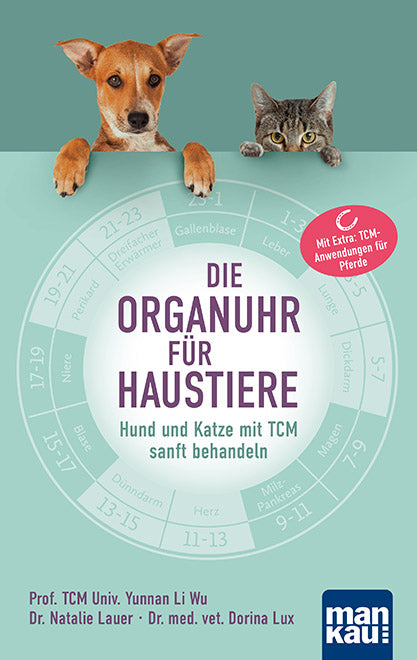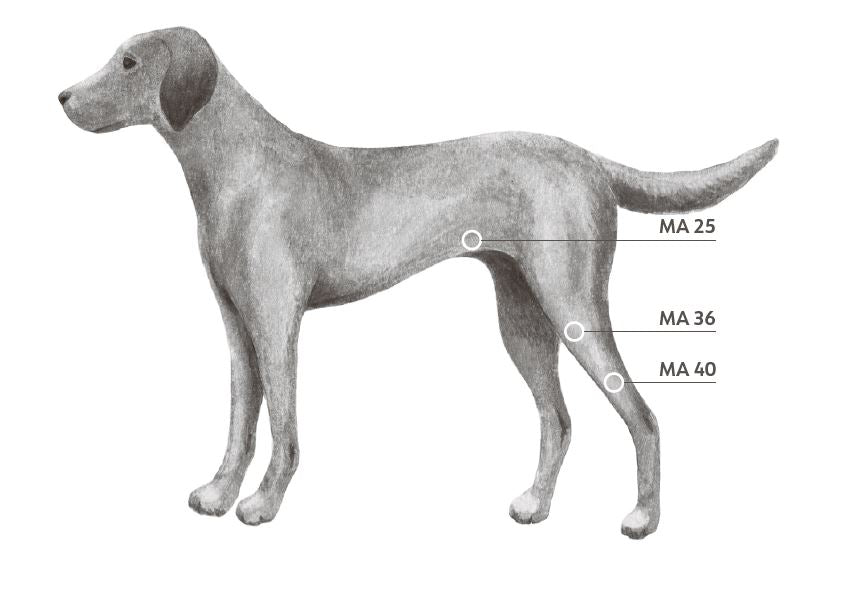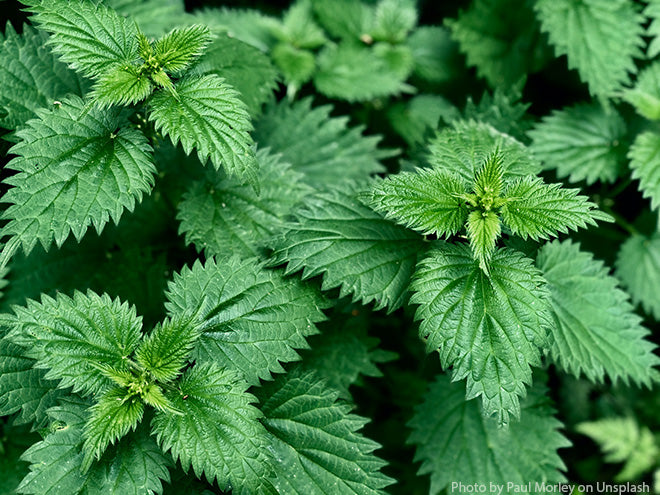
“Regional medicinal plants are becoming increasingly important” – Interview with Dr. med. vet. Dorina Lux
“Regional medicinal plants are becoming increasingly important” – Interview with Dr. med. vet. Dorina Lux
"Our ancestors already successfully and naturally treated their four-legged companions for illnesses and complaints using local medicinal plants, and the high effectiveness of the plant substances has now been confirmed in numerous scientific studies." Veterinarian Dr. med. vet. Dorina Lux , author of the compact guide " Green Home Medicine Cabinet for Dogs ", has specialized in natural medicine in her mobile practice. "In contrast to conventional medicines, medicinal plants that grow on our doorsteps are not subject to supply bottlenecks or production stops, but are always reliably available and often better tolerated." In an interview, the veterinarian explains the advantages of using regional medicinal plants, tailored to the patient dog.
Dogs are considered man's most loyal friends and have been with us for more than 15,000 years. How has it been possible to give our beloved four-legged friends a healthy life in this long relationship?
Dr. med. vet. Dorina Lux: At the time when our dogs were domesticated, there were no chemically produced medicines or complex operations. Instead, the healers of the time mainly used medicinal plants to treat illnesses. Phytotherapy is therefore one of the oldest methods of treatment, not only for humans, but also for dogs.
As a veterinarian, you have specialized in holistic medicine and naturopathy for small animals and in your compact guide you combine both old knowledge and the latest scientific findings on medicinal plants. What is special about the "Green Medicine Cabinet for Dogs"?
Dr. Lux: The special thing about the "Green Medicine Cabinet for Dogs" is that, on the one hand, dog owners learn how they can help their dog themselves in the event of illness and when they need to go to the vet. On the other hand, they receive information about medicinal plants and recipes for preparation that are specifically tailored to the dog as a patient.
Animals usually know instinctively what is good for them and when. Where does the veterinary knowledge come from about which medicinal plants are effective for which illnesses?
Dr. Lux: Knowledge about medicinal plants comes from a variety of sources. For example, from observations of wild animals that prefer to eat certain plants when they are ill. But also from careful testing of medicinal plants and their effects in ancient times. And more recently, from examining the chemical composition of medicinal plants and experimental studies on the effects of individual ingredients.
In the “Green Home Pharmacy” you have concentrated on plants and herbs from the local area. What advantages does their use have over conventional medicines?
Dr. Lux: The use of native medicinal plants - in the sense of medicinal plants that grow wild in our climatic conditions or can be cultivated outdoors - has the advantage that their use makes ecological sense. They do not have to be transported all over the world, nor are they produced using a lot of energy. Especially since the beginning of the corona pandemic, we have also seen the problems that come with the globally distributed production of many medicines: many medicines are repeatedly unavailable for long periods of time. This problem does not exist if I cultivate the medicinal plants in my own garden or collect them while walking the dog and then dry them myself.
The use of medicinal plants has been practiced in agricultural animal husbandry for centuries. How did it come about that they are now increasingly being used in dog husbandry?
Dr. Lux: Medicinal plants have probably been used on dogs for longer than on farm animals, as they were domesticated earlier. Unfortunately, with the industrialization and the switch to chemically produced medicines, this knowledge has been forgotten. But with a return to regional, unprocessed products, for example in the food sector, medicinal plants have once again become more important for our animals.
You write that many mild and serious illnesses can be successfully treated with medicinal herbs. What are these and can the treatment be carried out by the dog owner themselves?
Dr. Lux: Of course, serious illnesses should never be treated by the pet owner alone, but always in cooperation with a veterinarian or alternative practitioner. These include stomach ulcers and tumors, for example. Many minor illnesses such as diarrhea, vomiting or coughing can be treated very well by the dog owner themselves, provided they do not cause a visible impairment of the general well-being.
Animals, and dogs in particular, are known to have particularly fine senses. How and in what preparation should medicinal herbs be administered in order to overcome any possible aversion or even rejection?
Dr. Lux: Most dogs eat fresh or dried herbs without any problems if you mix them with their normal food. But liquid preparations such as tea, fresh plant juice and glycerine extracts - I describe how to make one yourself in my book - can also be mixed with the food or given with a syringe. The glycerine extract in particular is also often licked pure because it tastes sweet.
Book tip:
Dr. med. vet. Dorina Lux: Green home medicine cabinet for dogs. Using local medicinal plants safely. Compact guide . Mankau Verlag, 1st edition April 2022, paperback, color, 11.5 x 16.5 cm, 158 pages, 12.00 euros (D) / 12.40 euros (A), ISBN 978-3-86374-641-4
Link recommendations:
More information about the compact guide “Green medicine cabinet for dogs”
To the reading sample in PDF format
More about author Dr. med. vet. Dorina Lux
Our social networks − for questions, criticism, suggestions











